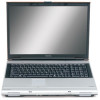Toshiba Satellite M65-S8211 Satellite M60-M65 User's Guide (PDF) - Page 81
Starting a program from Windows® Explorer, Start, Programs, Accessories, Windows Explorer
 |
View all Toshiba Satellite M65-S8211 manuals
Add to My Manuals
Save this manual to your list of manuals |
Page 81 highlights
Learning the Basics Starting a program 81 Starting a program from Windows® Explorer If a program is not listed in the All Programs menu, you can start it from Windows® Explorer. Windows® Explorer gives you a view of your computer's contents as a hierarchy or "tree." You can easily see the content of each drive and folder on your computer. To use this method, you should know the file name and location of the program's executable file (this file ends with .exe). This example opens WordPad using Windows Explorer. 1 Click Start, then All Programs. 2 Click Accessories. 3 Click Windows Explorer. 4 Click My Computer to expand the window. 5 In the left part of the window, click the line that ends in "(C:)." 6 In the left part of the window, under the C: icon, doubleclick the folder containing the program, in this case Program Files. Windows® Explorer shows the contents of the Program Files folder on the right side of the window. The left side of the window shows all the folders contained within the Program Files folder. 7 In the left part of the window, click Windows NT. 8 Click Accessories. Windows® Explorer shows the contents of the Accessories folder on the right side of the window. 9 In the right part of the window, double-click WordPad. The operating system opens WordPad. To close the program, click the Close button in the upper-right corner of the program's window.















